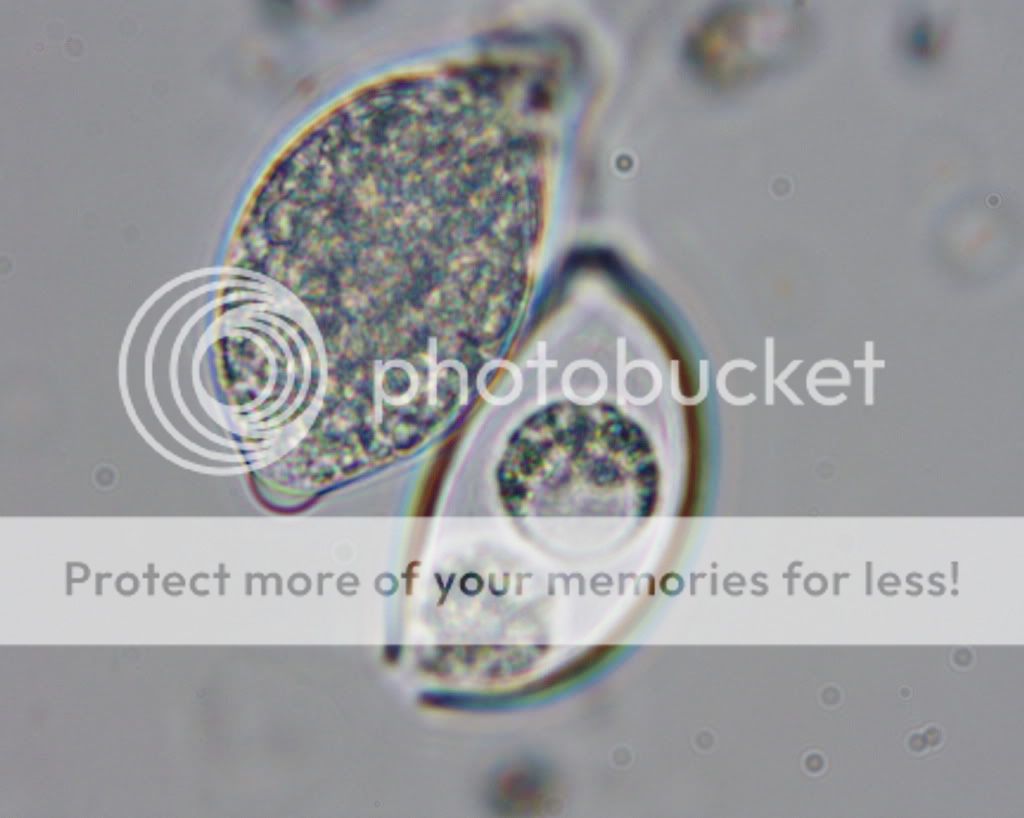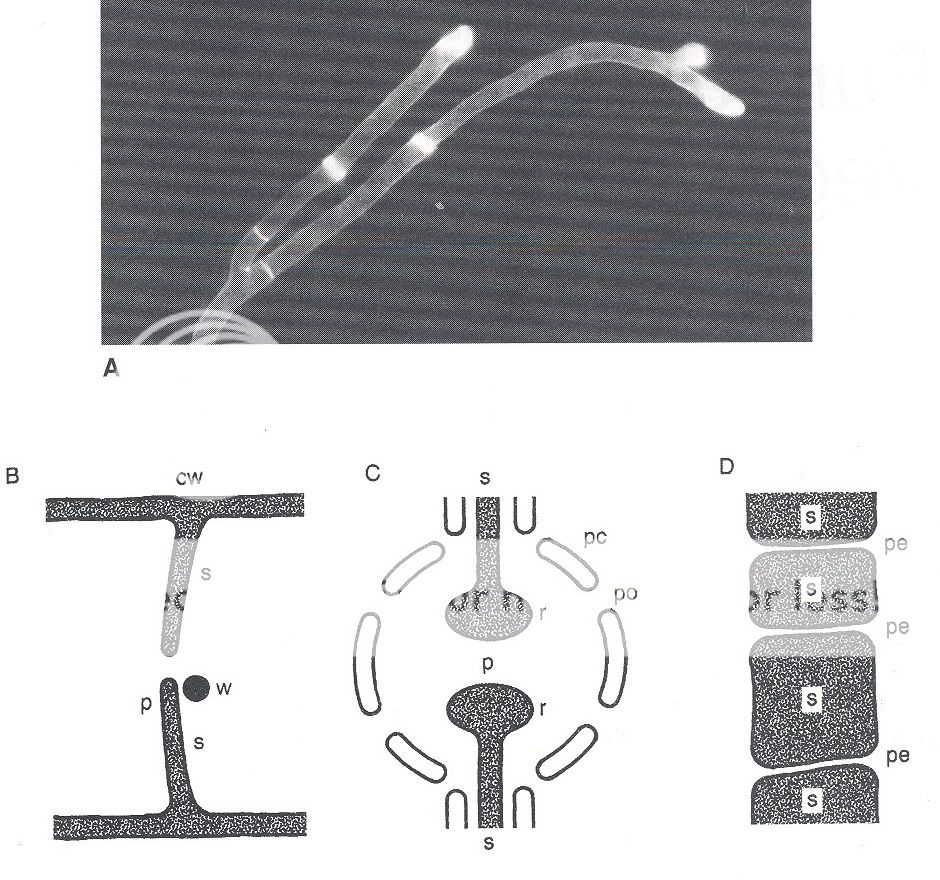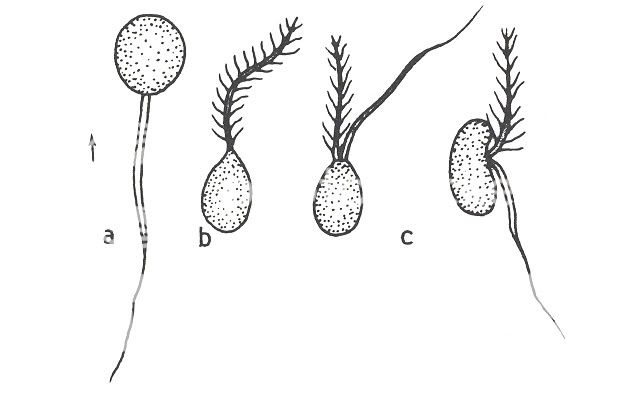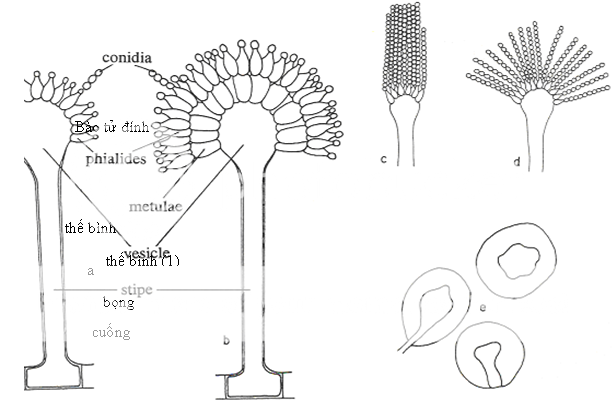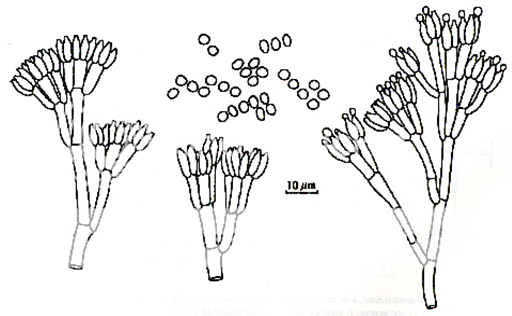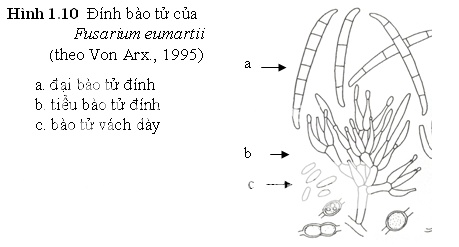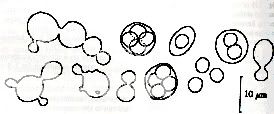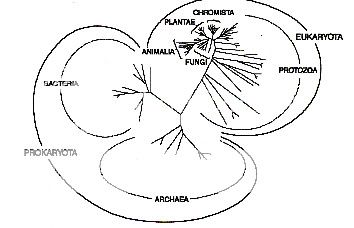<meta http-equiv="Content-Type" content="text/html; charset=utf-8"><meta name="ProgId" content="Word.Document"><meta name="Generator" content="Microsoft Word 11"><meta name="Originator" content="Microsoft Word 11"><link rel="File-List" href="file:///C:%5CUsers%5CAdmin%5CAppData%5CLocal%5CTemp%5Cmsohtml1%5C01%5Cclip_filelist.xml"><o:smarttagtype namespaceuri="urn:schemas-microsoft-com ffice:smarttags" name="country-region"></o:smarttagtype><o:smarttagtype namespaceuri="urn:schemas-microsoft-com
ffice:smarttags" name="country-region"></o:smarttagtype><o:smarttagtype namespaceuri="urn:schemas-microsoft-com ffice:smarttags" name="place"></o:smarttagtype><!--[if gte mso 9]><xml> <w:WordDocument> <w:View>Normal</w:View> <w:Zoom>0</w:Zoom> <w
ffice:smarttags" name="place"></o:smarttagtype><!--[if gte mso 9]><xml> <w:WordDocument> <w:View>Normal</w:View> <w:Zoom>0</w:Zoom> <w unctuationKerning/> <w:ValidateAgainstSchemas/> <w:SaveIfXMLInvalid>false</w:SaveIfXMLInvalid> <w:IgnoreMixedContent>false</w:IgnoreMixedContent> <w:AlwaysShowPlaceholderText>false</w:AlwaysShowPlaceholderText> <w:Compatibility> <w:BreakWrappedTables/> <w:SnapToGridInCell/> <w:WrapTextWithPunct/> <w:UseAsianBreakRules/> <w
unctuationKerning/> <w:ValidateAgainstSchemas/> <w:SaveIfXMLInvalid>false</w:SaveIfXMLInvalid> <w:IgnoreMixedContent>false</w:IgnoreMixedContent> <w:AlwaysShowPlaceholderText>false</w:AlwaysShowPlaceholderText> <w:Compatibility> <w:BreakWrappedTables/> <w:SnapToGridInCell/> <w:WrapTextWithPunct/> <w:UseAsianBreakRules/> <w ontGrowAutofit/> </w:Compatibility> <w:BrowserLevel>MicrosoftInternetExplorer4</w:BrowserLevel> </w:WordDocument> </xml><![endif]--><!--[if gte mso 9]><xml> <w:LatentStyles DefLockedState="false" LatentStyleCount="156"> </w:LatentStyles> </xml><![endif]--><!--[if !mso]><object classid="clsid:38481807-CA0E-42D2-BF39-B33AF135CC4D" id=ieooui></object> <style> st1\:*{behavior:url(#ieooui) } </style> <![endif]--><style> <!-- /* Style Definitions */ p.MsoNormal, li.MsoNormal, div.MsoNormal {mso-style-parent:""; margin:0in; margin-bottom:.0001pt; mso-pagination:widow-orphan; font-size:12.0pt; font-family:"Times New Roman"; mso-fareast-font-family:"Times New Roman";} @page Section1 {size:8.5in 11.0in; margin:1.0in 1.25in 1.0in 1.25in; mso-header-margin:.5in; mso-footer-margin:.5in; mso-paper-source:0;} div.Section1 {page:Section1;} /* List Definitions */ @list l0 {mso-list-id:219750699; mso-list-template-ids:1892166548;} @list l0:level1 {mso-level-text:"2\.2\.%1\."; mso-level-tab-stop:28.35pt; mso-level-number-position:left; margin-left:28.35pt; text-indent:-28.35pt;} @list l0:level2 {mso-level-text:"%1\.%2"; mso-level-tab-stop:.4in; mso-level-number-position:left; margin-left:.4in; text-indent:-.4in;} @list l0:level3 {mso-level-text:"%1\.%2\.%3"; mso-level-tab-stop:.5in; mso-level-number-position:left; margin-left:.5in; text-indent:-.5in;} @list l0:level4 {mso-level-text:"%1\.%2\.%3\.%4"; mso-level-tab-stop:.6in; mso-level-number-position:left; margin-left:.6in; text-indent:-.6in;} @list l0:level5 {mso-level-text:"%1\.%2\.%3\.%4\.%5"; mso-level-tab-stop:.7in; mso-level-number-position:left; margin-left:.7in; text-indent:-.7in;} @list l0:level6 {mso-level-text:"%1\.%2\.%3\.%4\.%5\.%6"; mso-level-tab-stop:.8in; mso-level-number-position:left; margin-left:.8in; text-indent:-.8in;} @list l0:level7 {mso-level-text:"%1\.%2\.%3\.%4\.%5\.%6\.%7"; mso-level-tab-stop:.9in; mso-level-number-position:left; margin-left:.9in; text-indent:-.9in;} @list l0:level8 {mso-level-text:"%1\.%2\.%3\.%4\.%5\.%6\.%7\.%8"; mso-level-tab-stop:1.0in; mso-level-number-position:left; margin-left:1.0in; text-indent:-1.0in;} @list l0:level9 {mso-level-text:"%1\.%2\.%3\.%4\.%5\.%6\.%7\.%8\.%9"; mso-level-tab-stop:1.1in; mso-level-number-position:left; margin-left:1.1in; text-indent:-1.1in;} @list l1 {mso-list-id:1758212737; mso-list-template-ids:520514206;} @list l1:level1 {mso-level-text:"2\.%1\."; mso-level-tab-stop:.25in; mso-level-number-position:left; margin-left:.25in; text-indent:-.25in;} @list l1:level2 {mso-level-text:"1\.%2\."; mso-level-tab-stop:.55in; mso-level-number-position:left; margin-left:.55in; text-indent:-.3in;} @list l1:level3 {mso-level-text:"3\.1\.%3\."; mso-level-tab-stop:1.0in; mso-level-number-position:left; margin-left:.85in; text-indent:-.35in;} @list l1:level4 {mso-level-number-format:alpha-lower; mso-level-text:"%13\.1\.3\.%4\."; mso-level-tab-stop:1.5in; mso-level-number-position:left; margin-left:1.2in; text-indent:-.45in;} @list l1:level5 {mso-level-text:"%1\.%2\.%3\.%4\.%5\."; mso-level-tab-stop:1.75in; mso-level-number-position:left; margin-left:1.55in; text-indent:-.55in;} @list l1:level6 {mso-level-text:"%1\.%2\.%3\.%4\.%5\.%6\."; mso-level-tab-stop:2.25in; mso-level-number-position:left; margin-left:1.9in; text-indent:-.65in;} @list l1:level7 {mso-level-text:"%1\.%2\.%3\.%4\.%5\.%6\.%7\."; mso-level-tab-stop:2.5in; mso-level-number-position:left; margin-left:2.25in; text-indent:-.75in;} @list l1:level8 {mso-level-text:"%1\.%2\.%3\.%4\.%5\.%6\.%7\.%8\."; mso-level-tab-stop:3.0in; mso-level-number-position:left; margin-left:2.6in; text-indent:-.85in;} @list l1:level9 {mso-level-text:"%1\.%2\.%3\.%4\.%5\.%6\.%7\.%8\.%9\."; mso-level-tab-stop:3.25in; mso-level-number-position:left; margin-left:3.0in; text-indent:-1.0in;} ol {margin-bottom:0in;} ul {margin-bottom:0in;} --> </style><!--[if gte mso 10]> <style> /* Style Definitions */ table.MsoNormalTable {mso-style-name:"Table Normal"; mso-tstyle-rowband-size:0; mso-tstyle-colband-size:0; mso-style-noshow:yes; mso-style-parent:""; mso-padding-alt:0in 5.4pt 0in 5.4pt; mso-para-margin:0in; mso-para-margin-bottom:.0001pt; mso-pagination:widow-orphan; font-size:10.0pt; font-family:"Times New Roman"; mso-ansi-language:#0400; mso-fareast-language:#0400; mso-bidi-language:#0400;} </style> <![endif]--><!--[endif]-->Giới thiệu chung về cây tiêu
ontGrowAutofit/> </w:Compatibility> <w:BrowserLevel>MicrosoftInternetExplorer4</w:BrowserLevel> </w:WordDocument> </xml><![endif]--><!--[if gte mso 9]><xml> <w:LatentStyles DefLockedState="false" LatentStyleCount="156"> </w:LatentStyles> </xml><![endif]--><!--[if !mso]><object classid="clsid:38481807-CA0E-42D2-BF39-B33AF135CC4D" id=ieooui></object> <style> st1\:*{behavior:url(#ieooui) } </style> <![endif]--><style> <!-- /* Style Definitions */ p.MsoNormal, li.MsoNormal, div.MsoNormal {mso-style-parent:""; margin:0in; margin-bottom:.0001pt; mso-pagination:widow-orphan; font-size:12.0pt; font-family:"Times New Roman"; mso-fareast-font-family:"Times New Roman";} @page Section1 {size:8.5in 11.0in; margin:1.0in 1.25in 1.0in 1.25in; mso-header-margin:.5in; mso-footer-margin:.5in; mso-paper-source:0;} div.Section1 {page:Section1;} /* List Definitions */ @list l0 {mso-list-id:219750699; mso-list-template-ids:1892166548;} @list l0:level1 {mso-level-text:"2\.2\.%1\."; mso-level-tab-stop:28.35pt; mso-level-number-position:left; margin-left:28.35pt; text-indent:-28.35pt;} @list l0:level2 {mso-level-text:"%1\.%2"; mso-level-tab-stop:.4in; mso-level-number-position:left; margin-left:.4in; text-indent:-.4in;} @list l0:level3 {mso-level-text:"%1\.%2\.%3"; mso-level-tab-stop:.5in; mso-level-number-position:left; margin-left:.5in; text-indent:-.5in;} @list l0:level4 {mso-level-text:"%1\.%2\.%3\.%4"; mso-level-tab-stop:.6in; mso-level-number-position:left; margin-left:.6in; text-indent:-.6in;} @list l0:level5 {mso-level-text:"%1\.%2\.%3\.%4\.%5"; mso-level-tab-stop:.7in; mso-level-number-position:left; margin-left:.7in; text-indent:-.7in;} @list l0:level6 {mso-level-text:"%1\.%2\.%3\.%4\.%5\.%6"; mso-level-tab-stop:.8in; mso-level-number-position:left; margin-left:.8in; text-indent:-.8in;} @list l0:level7 {mso-level-text:"%1\.%2\.%3\.%4\.%5\.%6\.%7"; mso-level-tab-stop:.9in; mso-level-number-position:left; margin-left:.9in; text-indent:-.9in;} @list l0:level8 {mso-level-text:"%1\.%2\.%3\.%4\.%5\.%6\.%7\.%8"; mso-level-tab-stop:1.0in; mso-level-number-position:left; margin-left:1.0in; text-indent:-1.0in;} @list l0:level9 {mso-level-text:"%1\.%2\.%3\.%4\.%5\.%6\.%7\.%8\.%9"; mso-level-tab-stop:1.1in; mso-level-number-position:left; margin-left:1.1in; text-indent:-1.1in;} @list l1 {mso-list-id:1758212737; mso-list-template-ids:520514206;} @list l1:level1 {mso-level-text:"2\.%1\."; mso-level-tab-stop:.25in; mso-level-number-position:left; margin-left:.25in; text-indent:-.25in;} @list l1:level2 {mso-level-text:"1\.%2\."; mso-level-tab-stop:.55in; mso-level-number-position:left; margin-left:.55in; text-indent:-.3in;} @list l1:level3 {mso-level-text:"3\.1\.%3\."; mso-level-tab-stop:1.0in; mso-level-number-position:left; margin-left:.85in; text-indent:-.35in;} @list l1:level4 {mso-level-number-format:alpha-lower; mso-level-text:"%13\.1\.3\.%4\."; mso-level-tab-stop:1.5in; mso-level-number-position:left; margin-left:1.2in; text-indent:-.45in;} @list l1:level5 {mso-level-text:"%1\.%2\.%3\.%4\.%5\."; mso-level-tab-stop:1.75in; mso-level-number-position:left; margin-left:1.55in; text-indent:-.55in;} @list l1:level6 {mso-level-text:"%1\.%2\.%3\.%4\.%5\.%6\."; mso-level-tab-stop:2.25in; mso-level-number-position:left; margin-left:1.9in; text-indent:-.65in;} @list l1:level7 {mso-level-text:"%1\.%2\.%3\.%4\.%5\.%6\.%7\."; mso-level-tab-stop:2.5in; mso-level-number-position:left; margin-left:2.25in; text-indent:-.75in;} @list l1:level8 {mso-level-text:"%1\.%2\.%3\.%4\.%5\.%6\.%7\.%8\."; mso-level-tab-stop:3.0in; mso-level-number-position:left; margin-left:2.6in; text-indent:-.85in;} @list l1:level9 {mso-level-text:"%1\.%2\.%3\.%4\.%5\.%6\.%7\.%8\.%9\."; mso-level-tab-stop:3.25in; mso-level-number-position:left; margin-left:3.0in; text-indent:-1.0in;} ol {margin-bottom:0in;} ul {margin-bottom:0in;} --> </style><!--[if gte mso 10]> <style> /* Style Definitions */ table.MsoNormalTable {mso-style-name:"Table Normal"; mso-tstyle-rowband-size:0; mso-tstyle-colband-size:0; mso-style-noshow:yes; mso-style-parent:""; mso-padding-alt:0in 5.4pt 0in 5.4pt; mso-para-margin:0in; mso-para-margin-bottom:.0001pt; mso-pagination:widow-orphan; font-size:10.0pt; font-family:"Times New Roman"; mso-ansi-language:#0400; mso-fareast-language:#0400; mso-bidi-language:#0400;} </style> <![endif]--><!--[endif]-->Giới thiệu chung về cây tiêu
<o ></o
></o > <!--[if !supportLists]--><!--[endif]-->Nguồn gốc cây tiêu <o
> <!--[if !supportLists]--><!--[endif]-->Nguồn gốc cây tiêu <o ></o
></o >
>
Tiêu có nguồn gốc ở vùng <st1 lace w:st="on">Ghats</st1
lace w:st="on">Ghats</st1 lace> miền Tây Ấn Độ, ở đây có nhiều giống tiêu hoang dại, mọc rất lâu đời. Sau đó, tiêu được người Hindu mang tới Java (<st1
lace> miền Tây Ấn Độ, ở đây có nhiều giống tiêu hoang dại, mọc rất lâu đời. Sau đó, tiêu được người Hindu mang tới Java (<st1 lace w:st="on"><st1:country-region w:st="on">Indonesia</st1:country-region></st1
lace w:st="on"><st1:country-region w:st="on">Indonesia</st1:country-region></st1 lace>) vào khoảng 600 năm sau công nguyên. Cuối thế kỷ 12, tiêu được trồng ở Mã Lai. Đến thế kỷ 18, tiêu được trồng ở Srilanka và Campuchia. Vào đầu thế kỷ 20 thì tiêu được trồng nhiều ở các nước nhiệt đới như Châu Phi với Mandagasca, Nigieria, Congo và Châu Mỹ với Brazil, Mexico…<o
lace>) vào khoảng 600 năm sau công nguyên. Cuối thế kỷ 12, tiêu được trồng ở Mã Lai. Đến thế kỷ 18, tiêu được trồng ở Srilanka và Campuchia. Vào đầu thế kỷ 20 thì tiêu được trồng nhiều ở các nước nhiệt đới như Châu Phi với Mandagasca, Nigieria, Congo và Châu Mỹ với Brazil, Mexico…<o ></o
></o >
>
Tiêu du nhập vào Đông Dương từ thế kỷ 17 nhưng mãi đến thế kỷ 18 mới bắt đầu phát triển mạnh khi một số người Trung Hoa di dân vào Campuchia ở vùng dọc bờ biển vịnh Thái Lan như Konpong, Trach, Kep, Kampot và tiêu vào Đồng bằng Sông Cửu Long qua ngõ Hà Tiên của tỉnh Kiên Giang, rồi sau đó lan dần đến các tỉnh khác ở miền Trung như Thừa Thiên – Huế, Quảng Trị…

<meta http-equiv="Content-Type" content="text/html; charset=utf-8"><meta name="ProgId" content="Word.Document"><meta name="Generator" content="Microsoft Word 11"><meta name="Originator" content="Microsoft Word 11"><link rel="File-List" href="file:///C:%5CUsers%5CAdmin%5CAppData%5CLocal%5CTemp%5Cmsohtml1%5C01%5Cclip_filelist.xml"><!--[if gte mso 9]><xml> <w:WordDocument> <w:View>Normal</w:View> <w:Zoom>0</w:Zoom> <w unctuationKerning/> <w:ValidateAgainstSchemas/> <w:SaveIfXMLInvalid>false</w:SaveIfXMLInvalid> <w:IgnoreMixedContent>false</w:IgnoreMixedContent> <w:AlwaysShowPlaceholderText>false</w:AlwaysShowPlaceholderText> <w:Compatibility> <w:BreakWrappedTables/> <w:SnapToGridInCell/> <w:WrapTextWithPunct/> <w:UseAsianBreakRules/> <w
unctuationKerning/> <w:ValidateAgainstSchemas/> <w:SaveIfXMLInvalid>false</w:SaveIfXMLInvalid> <w:IgnoreMixedContent>false</w:IgnoreMixedContent> <w:AlwaysShowPlaceholderText>false</w:AlwaysShowPlaceholderText> <w:Compatibility> <w:BreakWrappedTables/> <w:SnapToGridInCell/> <w:WrapTextWithPunct/> <w:UseAsianBreakRules/> <w ontGrowAutofit/> </w:Compatibility> <w:BrowserLevel>MicrosoftInternetExplorer4</w:BrowserLevel> </w:WordDocument> </xml><![endif]--><!--[if gte mso 9]><xml> <w:LatentStyles DefLockedState="false" LatentStyleCount="156"> </w:LatentStyles> </xml><![endif]--><style> <!-- /* Font Definitions */ @font-face {font-family:Wingdings; panose-1:5 0 0 0 0 0 0 0 0 0; mso-font-charset:2; mso-generic-font-family:auto; mso-font-pitch:variable; mso-font-signature:0 268435456 0 0 -2147483648 0;} /* Style Definitions */ p.MsoNormal, li.MsoNormal, div.MsoNormal {mso-style-parent:""; margin:0in; margin-bottom:.0001pt; mso-pagination:widow-orphan; font-size:12.0pt; font-family:"Times New Roman"; mso-fareast-font-family:"Times New Roman";} @page Section1 {size:8.5in 11.0in; margin:1.0in 1.25in 1.0in 1.25in; mso-header-margin:.5in; mso-footer-margin:.5in; mso-paper-source:0;} div.Section1 {page:Section1;} /* List Definitions */ @list l0 {mso-list-id:219750699; mso-list-template-ids:1892166548;} @list l0:level1 {mso-level-text:"2\.2\.%1\."; mso-level-tab-stop:28.35pt; mso-level-number-position:left; margin-left:28.35pt; text-indent:-28.35pt;} @list l0:level2 {mso-level-text:"%1\.%2"; mso-level-tab-stop:.4in; mso-level-number-position:left; margin-left:.4in; text-indent:-.4in;} @list l0:level3 {mso-level-text:"%1\.%2\.%3"; mso-level-tab-stop:.5in; mso-level-number-position:left; margin-left:.5in; text-indent:-.5in;} @list l0:level4 {mso-level-text:"%1\.%2\.%3\.%4"; mso-level-tab-stop:.6in; mso-level-number-position:left; margin-left:.6in; text-indent:-.6in;} @list l0:level5 {mso-level-text:"%1\.%2\.%3\.%4\.%5"; mso-level-tab-stop:.7in; mso-level-number-position:left; margin-left:.7in; text-indent:-.7in;} @list l0:level6 {mso-level-text:"%1\.%2\.%3\.%4\.%5\.%6"; mso-level-tab-stop:.8in; mso-level-number-position:left; margin-left:.8in; text-indent:-.8in;} @list l0:level7 {mso-level-text:"%1\.%2\.%3\.%4\.%5\.%6\.%7"; mso-level-tab-stop:.9in; mso-level-number-position:left; margin-left:.9in; text-indent:-.9in;} @list l0:level8 {mso-level-text:"%1\.%2\.%3\.%4\.%5\.%6\.%7\.%8"; mso-level-tab-stop:1.0in; mso-level-number-position:left; margin-left:1.0in; text-indent:-1.0in;} @list l0:level9 {mso-level-text:"%1\.%2\.%3\.%4\.%5\.%6\.%7\.%8\.%9"; mso-level-tab-stop:1.1in; mso-level-number-position:left; margin-left:1.1in; text-indent:-1.1in;} @list l1 {mso-list-id:2082365321; mso-list-type:hybrid; mso-list-template-ids:-1632228492 1399635480 67698691 67698693 67698689 67698691 67698693 67698689 67698691 67698693;} @list l1:level1 {mso-level-number-format:bullet; mso-level-text:-; mso-level-tab-stop:.5in; mso-level-number-position:left; text-indent:-.25in; font-family:"Courier New"; mso-bidi-font-family:"Times New Roman";} @list l1:level2 {mso-level-number-format:bullet; mso-level-text
ontGrowAutofit/> </w:Compatibility> <w:BrowserLevel>MicrosoftInternetExplorer4</w:BrowserLevel> </w:WordDocument> </xml><![endif]--><!--[if gte mso 9]><xml> <w:LatentStyles DefLockedState="false" LatentStyleCount="156"> </w:LatentStyles> </xml><![endif]--><style> <!-- /* Font Definitions */ @font-face {font-family:Wingdings; panose-1:5 0 0 0 0 0 0 0 0 0; mso-font-charset:2; mso-generic-font-family:auto; mso-font-pitch:variable; mso-font-signature:0 268435456 0 0 -2147483648 0;} /* Style Definitions */ p.MsoNormal, li.MsoNormal, div.MsoNormal {mso-style-parent:""; margin:0in; margin-bottom:.0001pt; mso-pagination:widow-orphan; font-size:12.0pt; font-family:"Times New Roman"; mso-fareast-font-family:"Times New Roman";} @page Section1 {size:8.5in 11.0in; margin:1.0in 1.25in 1.0in 1.25in; mso-header-margin:.5in; mso-footer-margin:.5in; mso-paper-source:0;} div.Section1 {page:Section1;} /* List Definitions */ @list l0 {mso-list-id:219750699; mso-list-template-ids:1892166548;} @list l0:level1 {mso-level-text:"2\.2\.%1\."; mso-level-tab-stop:28.35pt; mso-level-number-position:left; margin-left:28.35pt; text-indent:-28.35pt;} @list l0:level2 {mso-level-text:"%1\.%2"; mso-level-tab-stop:.4in; mso-level-number-position:left; margin-left:.4in; text-indent:-.4in;} @list l0:level3 {mso-level-text:"%1\.%2\.%3"; mso-level-tab-stop:.5in; mso-level-number-position:left; margin-left:.5in; text-indent:-.5in;} @list l0:level4 {mso-level-text:"%1\.%2\.%3\.%4"; mso-level-tab-stop:.6in; mso-level-number-position:left; margin-left:.6in; text-indent:-.6in;} @list l0:level5 {mso-level-text:"%1\.%2\.%3\.%4\.%5"; mso-level-tab-stop:.7in; mso-level-number-position:left; margin-left:.7in; text-indent:-.7in;} @list l0:level6 {mso-level-text:"%1\.%2\.%3\.%4\.%5\.%6"; mso-level-tab-stop:.8in; mso-level-number-position:left; margin-left:.8in; text-indent:-.8in;} @list l0:level7 {mso-level-text:"%1\.%2\.%3\.%4\.%5\.%6\.%7"; mso-level-tab-stop:.9in; mso-level-number-position:left; margin-left:.9in; text-indent:-.9in;} @list l0:level8 {mso-level-text:"%1\.%2\.%3\.%4\.%5\.%6\.%7\.%8"; mso-level-tab-stop:1.0in; mso-level-number-position:left; margin-left:1.0in; text-indent:-1.0in;} @list l0:level9 {mso-level-text:"%1\.%2\.%3\.%4\.%5\.%6\.%7\.%8\.%9"; mso-level-tab-stop:1.1in; mso-level-number-position:left; margin-left:1.1in; text-indent:-1.1in;} @list l1 {mso-list-id:2082365321; mso-list-type:hybrid; mso-list-template-ids:-1632228492 1399635480 67698691 67698693 67698689 67698691 67698693 67698689 67698691 67698693;} @list l1:level1 {mso-level-number-format:bullet; mso-level-text:-; mso-level-tab-stop:.5in; mso-level-number-position:left; text-indent:-.25in; font-family:"Courier New"; mso-bidi-font-family:"Times New Roman";} @list l1:level2 {mso-level-number-format:bullet; mso-level-text ; mso-level-tab-stop:1.0in; mso-level-number-position:left; text-indent:-.25in; font-family:"Courier New";} @list l1:level3 {mso-level-number-format:bullet; mso-level-text:; mso-level-tab-stop:1.5in; mso-level-number-position:left; text-indent:-.25in; font-family:Wingdings;} ol {margin-bottom:0in;} ul {margin-bottom:0in;} --> </style><!--[if gte mso 10]> <style> /* Style Definitions */ table.MsoNormalTable {mso-style-name:"Table Normal"; mso-tstyle-rowband-size:0; mso-tstyle-colband-size:0; mso-style-noshow:yes; mso-style-parent:""; mso-padding-alt:0in 5.4pt 0in 5.4pt; mso-para-margin:0in; mso-para-margin-bottom:.0001pt; mso-pagination:widow-orphan; font-size:10.0pt; font-family:"Times New Roman"; mso-ansi-language:#0400; mso-fareast-language:#0400; mso-bidi-language:#0400;} </style> <![endif]--> <!--[endif]-->Công dụng của cây tiêu<o
; mso-level-tab-stop:1.0in; mso-level-number-position:left; text-indent:-.25in; font-family:"Courier New";} @list l1:level3 {mso-level-number-format:bullet; mso-level-text:; mso-level-tab-stop:1.5in; mso-level-number-position:left; text-indent:-.25in; font-family:Wingdings;} ol {margin-bottom:0in;} ul {margin-bottom:0in;} --> </style><!--[if gte mso 10]> <style> /* Style Definitions */ table.MsoNormalTable {mso-style-name:"Table Normal"; mso-tstyle-rowband-size:0; mso-tstyle-colband-size:0; mso-style-noshow:yes; mso-style-parent:""; mso-padding-alt:0in 5.4pt 0in 5.4pt; mso-para-margin:0in; mso-para-margin-bottom:.0001pt; mso-pagination:widow-orphan; font-size:10.0pt; font-family:"Times New Roman"; mso-ansi-language:#0400; mso-fareast-language:#0400; mso-bidi-language:#0400;} </style> <![endif]--> <!--[endif]-->Công dụng của cây tiêu<o ></o
></o >
>
Tiêu là loại cây trồng có thể sống lâu năm và có giá trị kinh tế cao. Tiêu được sử dụng làm gia vị, trong y dược, trong công nghiệp hương liệu và làm chất trừ côn trùng.<o ></o
></o >
>
<!--[if !supportLists]-->[FONT="]-[/FONT]<!--[endif]-->Chất gia vị: Hạt tiêu có vị nóng, cay, có mùi thơm hấp dẫn nên rất thích hợp cho việc chế biến các món ăn. Vì vậy mà tiêu đã trở thành gia vị được dùng rất phổ biến trên thế giới.<o ></o
></o >
>
<!--[if !supportLists]-->[FONT="]-[/FONT]<!--[endif]-->Trong y dược: Do có sự hiện diện của chất piperin, tinh dầu và nhựa có mùi thơm, cay, nóng đặc biệt, tiêu có tác dụng kích thích tiêu hóa, làm cho ăn ngon miệng. Ngoài ra, tiêu còn có tác dụng làm cho ấm bụng, thường dùng chung với gừng để chữa chứng tiêu chảy, ói mửa khi ăn nhằm món ăn lạ, dùng chung với hành lá trong tô cháo giải cảm…<o ></o
></o >
>
Tuy nhiên, khi dùng quá nhiều, tiêu có thể gây táo bón, kích thích niêm mạc dạ dày, gây sốt, viêm đường tiểu và có khi gây tiểu ra máu.<o ></o
></o >
>
<!--[if !supportLists]-->[FONT="]-[/FONT]<!--[endif]-->Trong công nghiệp hương liệu: Chất piperin trong hạt tiêu được thủy phân thành piperidin và acid piperic. Oxy hóa acid piperic bằng permanganate kali (KMnO<sub>4</sub>), ta thu được piperonal (heliotropin nhân tạo) có mùi hương tương tự như heliotropin và coumarin, dùng để thay thế các hương liệu này trong kỹ nghệ làm nước hoa.<o ></o
></o >
>
Tinh dầu tiêu với mùi thơm đặc biệt được sử dụng trong công nghiệp hương liệu và hóa dược.<o ></o
></o >
>
<!--[if !supportLists]-->[FONT="]-[/FONT]<!--[endif]-->Trừ côn trùng: Trước kia, người ta dùng dung dịch chiết xuất từ hạt tiêu xay tẩm vào da trong khi thuộc để ngừa côn trùng phá hoại, nhưng từ khi xuất hiện các loại thuốc hóa học công dụng và rẻ tiền hơn thì tiêu không còn được sử dụng trong lĩnh vực này nữa.
<!--[endif]-->Đặc điểm hình thái của cây tiêu<o ></o
></o > <!--[if !supportLists]-->*<!--[endif]-->Hệ thống rễ<o
> <!--[if !supportLists]-->*<!--[endif]-->Hệ thống rễ<o ></o
></o >
>
Thường gồm từ 3 – 6 rễ cái và một chùm rễ phụ ở dưới mặt đất, trên đốt thân có rễ bám (rễ thằn lằn)<o ></o
></o >
>
<!--[if !supportLists]-->[FONT="]-[/FONT]<!--[endif]-->Rễ cọc: Chỉ có những cây tiêu trồng bằng hạt mới có rễ cọc. Rễ này đâm sâu xuống đất đến độ sâu 2,5 m, làm nhiệm vụ chính là hút nước.<o ></o
></o >
>
<!--[if !supportLists]-->[FONT="]-[/FONT]<!--[endif]-->Rễ cái: Các rễ này cũng làm nhiệm vụ chính là hút nước. Đối với cây tiêu trồng bằng giâm cành, sau khi trồng ra ngoài nọc được 1 năm, các rễ cái này có thể ăn sâu đến 2 m.<o ></o
></o >
>
<!--[if !supportLists]-->[FONT="]-[/FONT]<!--[endif]-->Rễ phụ: Các rễ phụ mọc thành chùm, phát triển theo chiều ngang, rất dày đặc, phân bố nhiều nhất ở độ sâu 15 – 40 cm, làm nhiệm vụ hút nước và hút chất dinh dưỡng trong đất để nuôi cây.<o ></o
></o >
>
Rễ cây tiêu thuộc loại háo khí, không chịu được ngập úng, do đó để tạo cho rễ cái ăn sâu, cây chịu hạn tốt và rễ phụ phát triển tốt hút được nhiều chất dinh dưỡng thì phải thường xuyên có biện pháp cải tạo làm cho đất được tơi xốp, tăng hàm lượng mùn.<o ></o
></o >
>
Chỉ cần úng nước 12- 24 giờ thì bộ rễ cây tiêu đã bị tổn thương đáng kể và có thể dẫn tới việc hư thối và dây tiêu có thể bị chết dần.<o ></o
></o >
>
<!--[if !supportLists]-->[FONT="]-[/FONT]<!--[endif]-->Rễ bám: Mọc ra từ các đốt trên thân ở trên không, làm nhiệm vụ chính là giúp cây tiêu bám vào choái, vách tường… để vươn lên cao. Khả năng hút nước và hút chất dinh dưỡng của rễ bám rất hạn chế, gần như không đáng kể.<o ></o
></o >
>
<o ></o
></o >
>
---------------
<meta http-equiv="Content-Type" content="text/html; charset=utf-8"><meta name="ProgId" content="Word.Document"><meta name="Generator" content="Microsoft Word 11"><meta name="Originator" content="Microsoft Word 11"><link rel="File-List" href="file:///C:%5CUsers%5CAdmin%5CAppData%5CLocal%5CTemp%5Cmsohtml1%5C01%5Cclip_filelist.xml"><!--[if gte mso 9]><xml> <w:WordDocument> <w:View>Normal</w:View> <w:Zoom>0</w:Zoom> <w unctuationKerning/> <w:ValidateAgainstSchemas/> <w:SaveIfXMLInvalid>false</w:SaveIfXMLInvalid> <w:IgnoreMixedContent>false</w:IgnoreMixedContent> <w:AlwaysShowPlaceholderText>false</w:AlwaysShowPlaceholderText> <w:Compatibility> <w:BreakWrappedTables/> <w:SnapToGridInCell/> <w:WrapTextWithPunct/> <w:UseAsianBreakRules/> <w
unctuationKerning/> <w:ValidateAgainstSchemas/> <w:SaveIfXMLInvalid>false</w:SaveIfXMLInvalid> <w:IgnoreMixedContent>false</w:IgnoreMixedContent> <w:AlwaysShowPlaceholderText>false</w:AlwaysShowPlaceholderText> <w:Compatibility> <w:BreakWrappedTables/> <w:SnapToGridInCell/> <w:WrapTextWithPunct/> <w:UseAsianBreakRules/> <w ontGrowAutofit/> </w:Compatibility> <w:BrowserLevel>MicrosoftInternetExplorer4</w:BrowserLevel> </w:WordDocument> </xml><![endif]--><!--[if gte mso 9]><xml> <w:LatentStyles DefLockedState="false" LatentStyleCount="156"> </w:LatentStyles> </xml><![endif]--><style> <!-- /* Font Definitions */ @font-face {font-family:Wingdings; panose-1:5 0 0 0 0 0 0 0 0 0; mso-font-charset:2; mso-generic-font-family:auto; mso-font-pitch:variable; mso-font-signature:0 268435456 0 0 -2147483648 0;} /* Style Definitions */ p.MsoNormal, li.MsoNormal, div.MsoNormal {mso-style-parent:""; margin:0in; margin-bottom:.0001pt; mso-pagination:widow-orphan; font-size:12.0pt; font-family:"Times New Roman"; mso-fareast-font-family:"Times New Roman";} @page Section1 {size:8.5in 11.0in; margin:1.0in 1.25in 1.0in 1.25in; mso-header-margin:.5in; mso-footer-margin:.5in; mso-paper-source:0;} div.Section1 {page:Section1;} /* List Definitions */ @list l0 {mso-list-id:1263415080; mso-list-type:hybrid; mso-list-template-ids:344904762 67698697 67698691 902576806 67698689 67698691 67698693 67698689 67698691 67698693;} @list l0:level1 {mso-level-number-format:bullet; mso-level-text:; mso-level-tab-stop:1.0in; mso-level-number-position:left; margin-left:1.0in; text-indent:-.25in; font-family:Wingdings;} @list l0:level2 {mso-level-number-format:bullet; mso-level-text
ontGrowAutofit/> </w:Compatibility> <w:BrowserLevel>MicrosoftInternetExplorer4</w:BrowserLevel> </w:WordDocument> </xml><![endif]--><!--[if gte mso 9]><xml> <w:LatentStyles DefLockedState="false" LatentStyleCount="156"> </w:LatentStyles> </xml><![endif]--><style> <!-- /* Font Definitions */ @font-face {font-family:Wingdings; panose-1:5 0 0 0 0 0 0 0 0 0; mso-font-charset:2; mso-generic-font-family:auto; mso-font-pitch:variable; mso-font-signature:0 268435456 0 0 -2147483648 0;} /* Style Definitions */ p.MsoNormal, li.MsoNormal, div.MsoNormal {mso-style-parent:""; margin:0in; margin-bottom:.0001pt; mso-pagination:widow-orphan; font-size:12.0pt; font-family:"Times New Roman"; mso-fareast-font-family:"Times New Roman";} @page Section1 {size:8.5in 11.0in; margin:1.0in 1.25in 1.0in 1.25in; mso-header-margin:.5in; mso-footer-margin:.5in; mso-paper-source:0;} div.Section1 {page:Section1;} /* List Definitions */ @list l0 {mso-list-id:1263415080; mso-list-type:hybrid; mso-list-template-ids:344904762 67698697 67698691 902576806 67698689 67698691 67698693 67698689 67698691 67698693;} @list l0:level1 {mso-level-number-format:bullet; mso-level-text:; mso-level-tab-stop:1.0in; mso-level-number-position:left; margin-left:1.0in; text-indent:-.25in; font-family:Wingdings;} @list l0:level2 {mso-level-number-format:bullet; mso-level-text ; mso-level-tab-stop:1.5in; mso-level-number-position:left; margin-left:1.5in; text-indent:-.25in; font-family:"Courier New";} @list l0:level3 {mso-level-text:"3\.3\.%3\."; mso-level-tab-stop:2.0in; mso-level-number-position:left; margin-left:2.0in; text-indent:-.25in; mso-ansi-font-weight:bold;} @list l1 {mso-list-id:2082365321; mso-list-type:hybrid; mso-list-template-ids:-1632228492 1399635480 67698691 67698693 67698689 67698691 67698693 67698689 67698691 67698693;} @list l1:level1 {mso-level-number-format:bullet; mso-level-text:-; mso-level-tab-stop:.5in; mso-level-number-position:left; text-indent:-.25in; font-family:"Courier New"; mso-bidi-font-family:"Times New Roman";} @list l1:level2 {mso-level-number-format:bullet; mso-level-text
; mso-level-tab-stop:1.5in; mso-level-number-position:left; margin-left:1.5in; text-indent:-.25in; font-family:"Courier New";} @list l0:level3 {mso-level-text:"3\.3\.%3\."; mso-level-tab-stop:2.0in; mso-level-number-position:left; margin-left:2.0in; text-indent:-.25in; mso-ansi-font-weight:bold;} @list l1 {mso-list-id:2082365321; mso-list-type:hybrid; mso-list-template-ids:-1632228492 1399635480 67698691 67698693 67698689 67698691 67698693 67698689 67698691 67698693;} @list l1:level1 {mso-level-number-format:bullet; mso-level-text:-; mso-level-tab-stop:.5in; mso-level-number-position:left; text-indent:-.25in; font-family:"Courier New"; mso-bidi-font-family:"Times New Roman";} @list l1:level2 {mso-level-number-format:bullet; mso-level-text ; mso-level-tab-stop:1.0in; mso-level-number-position:left; text-indent:-.25in; font-family:"Courier New";} @list l1:level3 {mso-level-number-format:bullet; mso-level-text:; mso-level-tab-stop:1.5in; mso-level-number-position:left; text-indent:-.25in; font-family:Wingdings;} ol {margin-bottom:0in;} ul {margin-bottom:0in;} --> </style><!--[if gte mso 10]> <style> /* Style Definitions */ table.MsoNormalTable {mso-style-name:"Table Normal"; mso-tstyle-rowband-size:0; mso-tstyle-colband-size:0; mso-style-noshow:yes; mso-style-parent:""; mso-padding-alt:0in 5.4pt 0in 5.4pt; mso-para-margin:0in; mso-para-margin-bottom:.0001pt; mso-pagination:widow-orphan; font-size:10.0pt; font-family:"Times New Roman"; mso-ansi-language:#0400; mso-fareast-language:#0400; mso-bidi-language:#0400;} </style> <![endif]--> <!--[if !supportLists]-->*<!--[endif]-->Thân, cành, lá<o
; mso-level-tab-stop:1.0in; mso-level-number-position:left; text-indent:-.25in; font-family:"Courier New";} @list l1:level3 {mso-level-number-format:bullet; mso-level-text:; mso-level-tab-stop:1.5in; mso-level-number-position:left; text-indent:-.25in; font-family:Wingdings;} ol {margin-bottom:0in;} ul {margin-bottom:0in;} --> </style><!--[if gte mso 10]> <style> /* Style Definitions */ table.MsoNormalTable {mso-style-name:"Table Normal"; mso-tstyle-rowband-size:0; mso-tstyle-colband-size:0; mso-style-noshow:yes; mso-style-parent:""; mso-padding-alt:0in 5.4pt 0in 5.4pt; mso-para-margin:0in; mso-para-margin-bottom:.0001pt; mso-pagination:widow-orphan; font-size:10.0pt; font-family:"Times New Roman"; mso-ansi-language:#0400; mso-fareast-language:#0400; mso-bidi-language:#0400;} </style> <![endif]--> <!--[if !supportLists]-->*<!--[endif]-->Thân, cành, lá<o ></o
></o >
>
Tiêu thuộc loại thân thảo mềm dẻo được phân thành nhiều đốt, tại mỗi đốt có một lá đơn, hình trái tim, mọc cách. Ở nách lá có các mầm ngủ có thể phát sinh thành các cành tược, cành lươn, cành ác (cành cho trái) tùy theo từng giai đoạn phát triển của cây tiêu.<o ></o
></o >
>
<!--[if !supportLists]-->[FONT="]-[/FONT]<!--[endif]-->Cành tược (cành vượt): Thường phát sinh từ mầm nách trên các cây tiêu nhỏ hơn 1 tuổi. Đối với cây trưởng thành, cành tược phát sinh từ các mầm nách trên khung cành thân chính phía dưới thấp của trụ tiêu, và thường là cành cấp 1. Đặc điểm của cành tược là góc độ phân cành nhỏ, dưới 45<sup>0</sup>, cành mọc tương đối thẳng. Cành tược có sức sinh trưởng mạnh, khỏe, thường được dùng để giâm cành nhân giống.<o ></o
></o >
>
<!--[if !supportLists]-->[FONT="]-[/FONT]<!--[endif]-->Cành lươn: Cành phát sinh từ mầm nách gần sát gốc của bộ khung thân chính của cây tiêu trưởng thành. Đặc trưng của cành lươn là có dạng bò sát đất và các lóng rất dài. Cành lươn cũng được dùng để nhân giống, tuy vậy, tỷ lệ sống thấp và cây thường ra hoa trái chậm hơn so với cành tược nhưng tuổi thọ lại dài và năng suất cao.<o ></o
></o >
>
<!--[if !supportLists]-->[FONT="]-[/FONT]<!--[endif]-->Cành cho trái (còn gọi là cành ác hay cành ngang): Đó là cành mang trái, thường phát sinh từ mầm nách trên cây tiêu lớn hơn 1 năm tuổi. Đặc trưng của cành ác là góc độ phân cành lớn, mọc ngang, độ dài của cành thường ngắn hơn 1 m, cành khúc khuỷu và lóng rất ngắn, cành cho trái trên bộ khung cây tiêu đa số là cành cấp 2 trở lên. Cành cho trái nếu đem giâm cành cũng ra rễ, cho trái rất sớm. Tuy vậy, cây phát triển chậm, không leo mà mọc thành bụi vì lóng đốt không có rễ bám hoặc rất ít. Cây mau cỗi và năng suất thường thấp.


<meta http-equiv="Content-Type" content="text/html; charset=utf-8"><meta name="ProgId" content="Word.Document"><meta name="Generator" content="Microsoft Word 11"><meta name="Originator" content="Microsoft Word 11"><link rel="File-List" href="file:///C:%5CUsers%5CAdmin%5CAppData%5CLocal%5CTemp%5Cmsohtml1%5C01%5Cclip_filelist.xml"><!--[if gte mso 9]><xml> <w:WordDocument> <w:View>Normal</w:View> <w:Zoom>0</w:Zoom> <w unctuationKerning/> <w:ValidateAgainstSchemas/> <w:SaveIfXMLInvalid>false</w:SaveIfXMLInvalid> <w:IgnoreMixedContent>false</w:IgnoreMixedContent> <w:AlwaysShowPlaceholderText>false</w:AlwaysShowPlaceholderText> <w:Compatibility> <w:BreakWrappedTables/> <w:SnapToGridInCell/> <w:WrapTextWithPunct/> <w:UseAsianBreakRules/> <w
unctuationKerning/> <w:ValidateAgainstSchemas/> <w:SaveIfXMLInvalid>false</w:SaveIfXMLInvalid> <w:IgnoreMixedContent>false</w:IgnoreMixedContent> <w:AlwaysShowPlaceholderText>false</w:AlwaysShowPlaceholderText> <w:Compatibility> <w:BreakWrappedTables/> <w:SnapToGridInCell/> <w:WrapTextWithPunct/> <w:UseAsianBreakRules/> <w ontGrowAutofit/> </w:Compatibility> <w:BrowserLevel>MicrosoftInternetExplorer4</w:BrowserLevel> </w:WordDocument> </xml><![endif]--><!--[if gte mso 9]><xml> <w:LatentStyles DefLockedState="false" LatentStyleCount="156"> </w:LatentStyles> </xml><![endif]--><style> <!-- /* Font Definitions */ @font-face {font-family:Wingdings; panose-1:5 0 0 0 0 0 0 0 0 0; mso-font-charset:2; mso-generic-font-family:auto; mso-font-pitch:variable; mso-font-signature:0 268435456 0 0 -2147483648 0;} /* Style Definitions */ p.MsoNormal, li.MsoNormal, div.MsoNormal {mso-style-parent:""; margin:0in; margin-bottom:.0001pt; mso-pagination:widow-orphan; font-size:12.0pt; font-family:"Times New Roman"; mso-fareast-font-family:"Times New Roman";} @page Section1 {size:8.5in 11.0in; margin:1.0in 1.25in 1.0in 1.25in; mso-header-margin:.5in; mso-footer-margin:.5in; mso-paper-source:0;} div.Section1 {page:Section1;} /* List Definitions */ @list l0 {mso-list-id:1263415080; mso-list-type:hybrid; mso-list-template-ids:344904762 67698697 67698691 902576806 67698689 67698691 67698693 67698689 67698691 67698693;} @list l0:level1 {mso-level-number-format:bullet; mso-level-text:; mso-level-tab-stop:1.0in; mso-level-number-position:left; margin-left:1.0in; text-indent:-.25in; font-family:Wingdings;} @list l0:level2 {mso-level-number-format:bullet; mso-level-text
ontGrowAutofit/> </w:Compatibility> <w:BrowserLevel>MicrosoftInternetExplorer4</w:BrowserLevel> </w:WordDocument> </xml><![endif]--><!--[if gte mso 9]><xml> <w:LatentStyles DefLockedState="false" LatentStyleCount="156"> </w:LatentStyles> </xml><![endif]--><style> <!-- /* Font Definitions */ @font-face {font-family:Wingdings; panose-1:5 0 0 0 0 0 0 0 0 0; mso-font-charset:2; mso-generic-font-family:auto; mso-font-pitch:variable; mso-font-signature:0 268435456 0 0 -2147483648 0;} /* Style Definitions */ p.MsoNormal, li.MsoNormal, div.MsoNormal {mso-style-parent:""; margin:0in; margin-bottom:.0001pt; mso-pagination:widow-orphan; font-size:12.0pt; font-family:"Times New Roman"; mso-fareast-font-family:"Times New Roman";} @page Section1 {size:8.5in 11.0in; margin:1.0in 1.25in 1.0in 1.25in; mso-header-margin:.5in; mso-footer-margin:.5in; mso-paper-source:0;} div.Section1 {page:Section1;} /* List Definitions */ @list l0 {mso-list-id:1263415080; mso-list-type:hybrid; mso-list-template-ids:344904762 67698697 67698691 902576806 67698689 67698691 67698693 67698689 67698691 67698693;} @list l0:level1 {mso-level-number-format:bullet; mso-level-text:; mso-level-tab-stop:1.0in; mso-level-number-position:left; margin-left:1.0in; text-indent:-.25in; font-family:Wingdings;} @list l0:level2 {mso-level-number-format:bullet; mso-level-text ; mso-level-tab-stop:1.5in; mso-level-number-position:left; margin-left:1.5in; text-indent:-.25in; font-family:"Courier New";} @list l0:level3 {mso-level-text:"3\.3\.%3\."; mso-level-tab-stop:2.0in; mso-level-number-position:left; margin-left:2.0in; text-indent:-.25in; mso-ansi-font-weight:bold;} @list l1 {mso-list-id:2082365321; mso-list-type:hybrid; mso-list-template-ids:-1632228492 1399635480 67698691 67698693 67698689 67698691 67698693 67698689 67698691 67698693;} @list l1:level1 {mso-level-number-format:bullet; mso-level-text:-; mso-level-tab-stop:.5in; mso-level-number-position:left; text-indent:-.25in; font-family:"Courier New"; mso-bidi-font-family:"Times New Roman";} @list l1:level2 {mso-level-number-format:bullet; mso-level-text
; mso-level-tab-stop:1.5in; mso-level-number-position:left; margin-left:1.5in; text-indent:-.25in; font-family:"Courier New";} @list l0:level3 {mso-level-text:"3\.3\.%3\."; mso-level-tab-stop:2.0in; mso-level-number-position:left; margin-left:2.0in; text-indent:-.25in; mso-ansi-font-weight:bold;} @list l1 {mso-list-id:2082365321; mso-list-type:hybrid; mso-list-template-ids:-1632228492 1399635480 67698691 67698693 67698689 67698691 67698693 67698689 67698691 67698693;} @list l1:level1 {mso-level-number-format:bullet; mso-level-text:-; mso-level-tab-stop:.5in; mso-level-number-position:left; text-indent:-.25in; font-family:"Courier New"; mso-bidi-font-family:"Times New Roman";} @list l1:level2 {mso-level-number-format:bullet; mso-level-text ; mso-level-tab-stop:1.0in; mso-level-number-position:left; text-indent:-.25in; font-family:"Courier New";} @list l1:level3 {mso-level-number-format:bullet; mso-level-text:; mso-level-tab-stop:1.5in; mso-level-number-position:left; text-indent:-.25in; font-family:Wingdings;} ol {margin-bottom:0in;} ul {margin-bottom:0in;} --> </style><!--[if gte mso 10]> <style> /* Style Definitions */ table.MsoNormalTable {mso-style-name:"Table Normal"; mso-tstyle-rowband-size:0; mso-tstyle-colband-size:0; mso-style-noshow:yes; mso-style-parent:""; mso-padding-alt:0in 5.4pt 0in 5.4pt; mso-para-margin:0in; mso-para-margin-bottom:.0001pt; mso-pagination:widow-orphan; font-size:10.0pt; font-family:"Times New Roman"; mso-ansi-language:#0400; mso-fareast-language:#0400; mso-bidi-language:#0400;} </style> <![endif]--> <!--[if !supportLists]-->* <!--[endif]-->Hoa, quả<o
; mso-level-tab-stop:1.0in; mso-level-number-position:left; text-indent:-.25in; font-family:"Courier New";} @list l1:level3 {mso-level-number-format:bullet; mso-level-text:; mso-level-tab-stop:1.5in; mso-level-number-position:left; text-indent:-.25in; font-family:Wingdings;} ol {margin-bottom:0in;} ul {margin-bottom:0in;} --> </style><!--[if gte mso 10]> <style> /* Style Definitions */ table.MsoNormalTable {mso-style-name:"Table Normal"; mso-tstyle-rowband-size:0; mso-tstyle-colband-size:0; mso-style-noshow:yes; mso-style-parent:""; mso-padding-alt:0in 5.4pt 0in 5.4pt; mso-para-margin:0in; mso-para-margin-bottom:.0001pt; mso-pagination:widow-orphan; font-size:10.0pt; font-family:"Times New Roman"; mso-ansi-language:#0400; mso-fareast-language:#0400; mso-bidi-language:#0400;} </style> <![endif]--> <!--[if !supportLists]-->* <!--[endif]-->Hoa, quả<o ></o
></o >
>
Cây tiêu ra hoa dưới dạng hoa tự hình gié, treo lủng lẳng, dài 7 – 12 cm tùy giống tiêu và tùy điều kiện chăm sóc. Trên gié hoa có bình quân 20 – 60 hoa xếp thành hình xoắn ốc, hoa tiêu lưỡng tính hay đơn tính.<o ></o
></o >
>
Trái tiêu thuộc loại trái hạch, không có cuống, mang 1 hạt hình cầu. Từ khi hoa xuất hiện đầy đủ cho đến khi trái chín kéo dài từ 7 – 10 tháng chia làm các giai đoạn sau:<o ></o
></o >
>
<!--[if !supportLists]-->[FONT="]-[/FONT]<!--[endif]-->Hoa tự xuất hiện đầy đủ đến khi hoa nở thụ phấn: 1 – 1,5 tháng.<o ></o
></o >
>
<!--[if !supportLists]-->[FONT="]-[/FONT]<!--[endif]-->Thụ phấn, phát triển trái (4 – 5,5 tháng): Giai đoạn này tiêu lớn nhanh về kích thước và đạt độ lớn tối đa của trái. Đây là giai đoạn tiêu cần nước và dinh dưỡng nhất.<o ></o
></o >
>
[FONT="]Trái chín (2 – 3 tháng): Trong giai đoạn này hạt bắt đầu phát triển, đạt đường kính tối đa. Trái tiêu thường chín tập trung vào các tháng 1 – 2 trong năm, đôi khi kéo dài đến các tháng 4 – 5 do các lứa hoa trễ và cũng tùy theo giống.
[/FONT]
[FONT="]
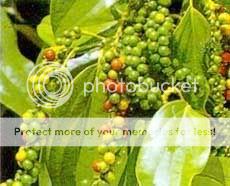
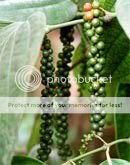 [/FONT]
[/FONT]
<o ></o
></o >
>
 ontGrowAutofit/> </w:Compatibility> <w:BrowserLevel>MicrosoftInternetExplorer4</w:BrowserLevel> </w:WordDocument> </xml><![endif]--><!--[if gte mso 9]><xml> <w:LatentStyles DefLockedState="false" LatentStyleCount="156"> </w:LatentStyles> </xml><![endif]--><!--[if !mso]><object classid="clsid:38481807-CA0E-42D2-BF39-B33AF135CC4D" id=ieooui></object> <style> st1\:*{behavior:url(#ieooui) } </style> <![endif]--><style> <!-- /* Style Definitions */ p.MsoNormal, li.MsoNormal, div.MsoNormal {mso-style-parent:""; margin:0in; margin-bottom:.0001pt; mso-pagination:widow-orphan; font-size:12.0pt; font-family:"Times New Roman"; mso-fareast-font-family:"Times New Roman";} @page Section1 {size:8.5in 11.0in; margin:1.0in 1.25in 1.0in 1.25in; mso-header-margin:.5in; mso-footer-margin:.5in; mso-paper-source:0;} div.Section1 {page:Section1;} /* List Definitions */ @list l0 {mso-list-id:219750699; mso-list-template-ids:1892166548;} @list l0:level1 {mso-level-text:"2\.2\.%1\."; mso-level-tab-stop:28.35pt; mso-level-number-position:left; margin-left:28.35pt; text-indent:-28.35pt;} @list l0:level2 {mso-level-text:"%1\.%2"; mso-level-tab-stop:.4in; mso-level-number-position:left; margin-left:.4in; text-indent:-.4in;} @list l0:level3 {mso-level-text:"%1\.%2\.%3"; mso-level-tab-stop:.5in; mso-level-number-position:left; margin-left:.5in; text-indent:-.5in;} @list l0:level4 {mso-level-text:"%1\.%2\.%3\.%4"; mso-level-tab-stop:.6in; mso-level-number-position:left; margin-left:.6in; text-indent:-.6in;} @list l0:level5 {mso-level-text:"%1\.%2\.%3\.%4\.%5"; mso-level-tab-stop:.7in; mso-level-number-position:left; margin-left:.7in; text-indent:-.7in;} @list l0:level6 {mso-level-text:"%1\.%2\.%3\.%4\.%5\.%6"; mso-level-tab-stop:.8in; mso-level-number-position:left; margin-left:.8in; text-indent:-.8in;} @list l0:level7 {mso-level-text:"%1\.%2\.%3\.%4\.%5\.%6\.%7"; mso-level-tab-stop:.9in; mso-level-number-position:left; margin-left:.9in; text-indent:-.9in;} @list l0:level8 {mso-level-text:"%1\.%2\.%3\.%4\.%5\.%6\.%7\.%8"; mso-level-tab-stop:1.0in; mso-level-number-position:left; margin-left:1.0in; text-indent:-1.0in;} @list l0:level9 {mso-level-text:"%1\.%2\.%3\.%4\.%5\.%6\.%7\.%8\.%9"; mso-level-tab-stop:1.1in; mso-level-number-position:left; margin-left:1.1in; text-indent:-1.1in;} @list l1 {mso-list-id:1758212737; mso-list-template-ids:520514206;} @list l1:level1 {mso-level-text:"2\.%1\."; mso-level-tab-stop:.25in; mso-level-number-position:left; margin-left:.25in; text-indent:-.25in;} @list l1:level2 {mso-level-text:"1\.%2\."; mso-level-tab-stop:.55in; mso-level-number-position:left; margin-left:.55in; text-indent:-.3in;} @list l1:level3 {mso-level-text:"3\.1\.%3\."; mso-level-tab-stop:1.0in; mso-level-number-position:left; margin-left:.85in; text-indent:-.35in;} @list l1:level4 {mso-level-number-format:alpha-lower; mso-level-text:"%13\.1\.3\.%4\."; mso-level-tab-stop:1.5in; mso-level-number-position:left; margin-left:1.2in; text-indent:-.45in;} @list l1:level5 {mso-level-text:"%1\.%2\.%3\.%4\.%5\."; mso-level-tab-stop:1.75in; mso-level-number-position:left; margin-left:1.55in; text-indent:-.55in;} @list l1:level6 {mso-level-text:"%1\.%2\.%3\.%4\.%5\.%6\."; mso-level-tab-stop:2.25in; mso-level-number-position:left; margin-left:1.9in; text-indent:-.65in;} @list l1:level7 {mso-level-text:"%1\.%2\.%3\.%4\.%5\.%6\.%7\."; mso-level-tab-stop:2.5in; mso-level-number-position:left; margin-left:2.25in; text-indent:-.75in;} @list l1:level8 {mso-level-text:"%1\.%2\.%3\.%4\.%5\.%6\.%7\.%8\."; mso-level-tab-stop:3.0in; mso-level-number-position:left; margin-left:2.6in; text-indent:-.85in;} @list l1:level9 {mso-level-text:"%1\.%2\.%3\.%4\.%5\.%6\.%7\.%8\.%9\."; mso-level-tab-stop:3.25in; mso-level-number-position:left; margin-left:3.0in; text-indent:-1.0in;} ol {margin-bottom:0in;} ul {margin-bottom:0in;} --> </style><!--[if gte mso 10]> <style> /* Style Definitions */ table.MsoNormalTable {mso-style-name:"Table Normal"; mso-tstyle-rowband-size:0; mso-tstyle-colband-size:0; mso-style-noshow:yes; mso-style-parent:""; mso-padding-alt:0in 5.4pt 0in 5.4pt; mso-para-margin:0in; mso-para-margin-bottom:.0001pt; mso-pagination:widow-orphan; font-size:10.0pt; font-family:"Times New Roman"; mso-ansi-language:#0400; mso-fareast-language:#0400; mso-bidi-language:#0400;} </style> <![endif]--><!--[endif]-->Giới thiệu chung về cây tiêu
ontGrowAutofit/> </w:Compatibility> <w:BrowserLevel>MicrosoftInternetExplorer4</w:BrowserLevel> </w:WordDocument> </xml><![endif]--><!--[if gte mso 9]><xml> <w:LatentStyles DefLockedState="false" LatentStyleCount="156"> </w:LatentStyles> </xml><![endif]--><!--[if !mso]><object classid="clsid:38481807-CA0E-42D2-BF39-B33AF135CC4D" id=ieooui></object> <style> st1\:*{behavior:url(#ieooui) } </style> <![endif]--><style> <!-- /* Style Definitions */ p.MsoNormal, li.MsoNormal, div.MsoNormal {mso-style-parent:""; margin:0in; margin-bottom:.0001pt; mso-pagination:widow-orphan; font-size:12.0pt; font-family:"Times New Roman"; mso-fareast-font-family:"Times New Roman";} @page Section1 {size:8.5in 11.0in; margin:1.0in 1.25in 1.0in 1.25in; mso-header-margin:.5in; mso-footer-margin:.5in; mso-paper-source:0;} div.Section1 {page:Section1;} /* List Definitions */ @list l0 {mso-list-id:219750699; mso-list-template-ids:1892166548;} @list l0:level1 {mso-level-text:"2\.2\.%1\."; mso-level-tab-stop:28.35pt; mso-level-number-position:left; margin-left:28.35pt; text-indent:-28.35pt;} @list l0:level2 {mso-level-text:"%1\.%2"; mso-level-tab-stop:.4in; mso-level-number-position:left; margin-left:.4in; text-indent:-.4in;} @list l0:level3 {mso-level-text:"%1\.%2\.%3"; mso-level-tab-stop:.5in; mso-level-number-position:left; margin-left:.5in; text-indent:-.5in;} @list l0:level4 {mso-level-text:"%1\.%2\.%3\.%4"; mso-level-tab-stop:.6in; mso-level-number-position:left; margin-left:.6in; text-indent:-.6in;} @list l0:level5 {mso-level-text:"%1\.%2\.%3\.%4\.%5"; mso-level-tab-stop:.7in; mso-level-number-position:left; margin-left:.7in; text-indent:-.7in;} @list l0:level6 {mso-level-text:"%1\.%2\.%3\.%4\.%5\.%6"; mso-level-tab-stop:.8in; mso-level-number-position:left; margin-left:.8in; text-indent:-.8in;} @list l0:level7 {mso-level-text:"%1\.%2\.%3\.%4\.%5\.%6\.%7"; mso-level-tab-stop:.9in; mso-level-number-position:left; margin-left:.9in; text-indent:-.9in;} @list l0:level8 {mso-level-text:"%1\.%2\.%3\.%4\.%5\.%6\.%7\.%8"; mso-level-tab-stop:1.0in; mso-level-number-position:left; margin-left:1.0in; text-indent:-1.0in;} @list l0:level9 {mso-level-text:"%1\.%2\.%3\.%4\.%5\.%6\.%7\.%8\.%9"; mso-level-tab-stop:1.1in; mso-level-number-position:left; margin-left:1.1in; text-indent:-1.1in;} @list l1 {mso-list-id:1758212737; mso-list-template-ids:520514206;} @list l1:level1 {mso-level-text:"2\.%1\."; mso-level-tab-stop:.25in; mso-level-number-position:left; margin-left:.25in; text-indent:-.25in;} @list l1:level2 {mso-level-text:"1\.%2\."; mso-level-tab-stop:.55in; mso-level-number-position:left; margin-left:.55in; text-indent:-.3in;} @list l1:level3 {mso-level-text:"3\.1\.%3\."; mso-level-tab-stop:1.0in; mso-level-number-position:left; margin-left:.85in; text-indent:-.35in;} @list l1:level4 {mso-level-number-format:alpha-lower; mso-level-text:"%13\.1\.3\.%4\."; mso-level-tab-stop:1.5in; mso-level-number-position:left; margin-left:1.2in; text-indent:-.45in;} @list l1:level5 {mso-level-text:"%1\.%2\.%3\.%4\.%5\."; mso-level-tab-stop:1.75in; mso-level-number-position:left; margin-left:1.55in; text-indent:-.55in;} @list l1:level6 {mso-level-text:"%1\.%2\.%3\.%4\.%5\.%6\."; mso-level-tab-stop:2.25in; mso-level-number-position:left; margin-left:1.9in; text-indent:-.65in;} @list l1:level7 {mso-level-text:"%1\.%2\.%3\.%4\.%5\.%6\.%7\."; mso-level-tab-stop:2.5in; mso-level-number-position:left; margin-left:2.25in; text-indent:-.75in;} @list l1:level8 {mso-level-text:"%1\.%2\.%3\.%4\.%5\.%6\.%7\.%8\."; mso-level-tab-stop:3.0in; mso-level-number-position:left; margin-left:2.6in; text-indent:-.85in;} @list l1:level9 {mso-level-text:"%1\.%2\.%3\.%4\.%5\.%6\.%7\.%8\.%9\."; mso-level-tab-stop:3.25in; mso-level-number-position:left; margin-left:3.0in; text-indent:-1.0in;} ol {margin-bottom:0in;} ul {margin-bottom:0in;} --> </style><!--[if gte mso 10]> <style> /* Style Definitions */ table.MsoNormalTable {mso-style-name:"Table Normal"; mso-tstyle-rowband-size:0; mso-tstyle-colband-size:0; mso-style-noshow:yes; mso-style-parent:""; mso-padding-alt:0in 5.4pt 0in 5.4pt; mso-para-margin:0in; mso-para-margin-bottom:.0001pt; mso-pagination:widow-orphan; font-size:10.0pt; font-family:"Times New Roman"; mso-ansi-language:#0400; mso-fareast-language:#0400; mso-bidi-language:#0400;} </style> <![endif]--><!--[endif]-->Giới thiệu chung về cây tiêu<o
Tiêu có nguồn gốc ở vùng <st1
Tiêu du nhập vào Đông Dương từ thế kỷ 17 nhưng mãi đến thế kỷ 18 mới bắt đầu phát triển mạnh khi một số người Trung Hoa di dân vào Campuchia ở vùng dọc bờ biển vịnh Thái Lan như Konpong, Trach, Kep, Kampot và tiêu vào Đồng bằng Sông Cửu Long qua ngõ Hà Tiên của tỉnh Kiên Giang, rồi sau đó lan dần đến các tỉnh khác ở miền Trung như Thừa Thiên – Huế, Quảng Trị…

<meta http-equiv="Content-Type" content="text/html; charset=utf-8"><meta name="ProgId" content="Word.Document"><meta name="Generator" content="Microsoft Word 11"><meta name="Originator" content="Microsoft Word 11"><link rel="File-List" href="file:///C:%5CUsers%5CAdmin%5CAppData%5CLocal%5CTemp%5Cmsohtml1%5C01%5Cclip_filelist.xml"><!--[if gte mso 9]><xml> <w:WordDocument> <w:View>Normal</w:View> <w:Zoom>0</w:Zoom> <w
 ontGrowAutofit/> </w:Compatibility> <w:BrowserLevel>MicrosoftInternetExplorer4</w:BrowserLevel> </w:WordDocument> </xml><![endif]--><!--[if gte mso 9]><xml> <w:LatentStyles DefLockedState="false" LatentStyleCount="156"> </w:LatentStyles> </xml><![endif]--><style> <!-- /* Font Definitions */ @font-face {font-family:Wingdings; panose-1:5 0 0 0 0 0 0 0 0 0; mso-font-charset:2; mso-generic-font-family:auto; mso-font-pitch:variable; mso-font-signature:0 268435456 0 0 -2147483648 0;} /* Style Definitions */ p.MsoNormal, li.MsoNormal, div.MsoNormal {mso-style-parent:""; margin:0in; margin-bottom:.0001pt; mso-pagination:widow-orphan; font-size:12.0pt; font-family:"Times New Roman"; mso-fareast-font-family:"Times New Roman";} @page Section1 {size:8.5in 11.0in; margin:1.0in 1.25in 1.0in 1.25in; mso-header-margin:.5in; mso-footer-margin:.5in; mso-paper-source:0;} div.Section1 {page:Section1;} /* List Definitions */ @list l0 {mso-list-id:219750699; mso-list-template-ids:1892166548;} @list l0:level1 {mso-level-text:"2\.2\.%1\."; mso-level-tab-stop:28.35pt; mso-level-number-position:left; margin-left:28.35pt; text-indent:-28.35pt;} @list l0:level2 {mso-level-text:"%1\.%2"; mso-level-tab-stop:.4in; mso-level-number-position:left; margin-left:.4in; text-indent:-.4in;} @list l0:level3 {mso-level-text:"%1\.%2\.%3"; mso-level-tab-stop:.5in; mso-level-number-position:left; margin-left:.5in; text-indent:-.5in;} @list l0:level4 {mso-level-text:"%1\.%2\.%3\.%4"; mso-level-tab-stop:.6in; mso-level-number-position:left; margin-left:.6in; text-indent:-.6in;} @list l0:level5 {mso-level-text:"%1\.%2\.%3\.%4\.%5"; mso-level-tab-stop:.7in; mso-level-number-position:left; margin-left:.7in; text-indent:-.7in;} @list l0:level6 {mso-level-text:"%1\.%2\.%3\.%4\.%5\.%6"; mso-level-tab-stop:.8in; mso-level-number-position:left; margin-left:.8in; text-indent:-.8in;} @list l0:level7 {mso-level-text:"%1\.%2\.%3\.%4\.%5\.%6\.%7"; mso-level-tab-stop:.9in; mso-level-number-position:left; margin-left:.9in; text-indent:-.9in;} @list l0:level8 {mso-level-text:"%1\.%2\.%3\.%4\.%5\.%6\.%7\.%8"; mso-level-tab-stop:1.0in; mso-level-number-position:left; margin-left:1.0in; text-indent:-1.0in;} @list l0:level9 {mso-level-text:"%1\.%2\.%3\.%4\.%5\.%6\.%7\.%8\.%9"; mso-level-tab-stop:1.1in; mso-level-number-position:left; margin-left:1.1in; text-indent:-1.1in;} @list l1 {mso-list-id:2082365321; mso-list-type:hybrid; mso-list-template-ids:-1632228492 1399635480 67698691 67698693 67698689 67698691 67698693 67698689 67698691 67698693;} @list l1:level1 {mso-level-number-format:bullet; mso-level-text:-; mso-level-tab-stop:.5in; mso-level-number-position:left; text-indent:-.25in; font-family:"Courier New"; mso-bidi-font-family:"Times New Roman";} @list l1:level2 {mso-level-number-format:bullet; mso-level-text
ontGrowAutofit/> </w:Compatibility> <w:BrowserLevel>MicrosoftInternetExplorer4</w:BrowserLevel> </w:WordDocument> </xml><![endif]--><!--[if gte mso 9]><xml> <w:LatentStyles DefLockedState="false" LatentStyleCount="156"> </w:LatentStyles> </xml><![endif]--><style> <!-- /* Font Definitions */ @font-face {font-family:Wingdings; panose-1:5 0 0 0 0 0 0 0 0 0; mso-font-charset:2; mso-generic-font-family:auto; mso-font-pitch:variable; mso-font-signature:0 268435456 0 0 -2147483648 0;} /* Style Definitions */ p.MsoNormal, li.MsoNormal, div.MsoNormal {mso-style-parent:""; margin:0in; margin-bottom:.0001pt; mso-pagination:widow-orphan; font-size:12.0pt; font-family:"Times New Roman"; mso-fareast-font-family:"Times New Roman";} @page Section1 {size:8.5in 11.0in; margin:1.0in 1.25in 1.0in 1.25in; mso-header-margin:.5in; mso-footer-margin:.5in; mso-paper-source:0;} div.Section1 {page:Section1;} /* List Definitions */ @list l0 {mso-list-id:219750699; mso-list-template-ids:1892166548;} @list l0:level1 {mso-level-text:"2\.2\.%1\."; mso-level-tab-stop:28.35pt; mso-level-number-position:left; margin-left:28.35pt; text-indent:-28.35pt;} @list l0:level2 {mso-level-text:"%1\.%2"; mso-level-tab-stop:.4in; mso-level-number-position:left; margin-left:.4in; text-indent:-.4in;} @list l0:level3 {mso-level-text:"%1\.%2\.%3"; mso-level-tab-stop:.5in; mso-level-number-position:left; margin-left:.5in; text-indent:-.5in;} @list l0:level4 {mso-level-text:"%1\.%2\.%3\.%4"; mso-level-tab-stop:.6in; mso-level-number-position:left; margin-left:.6in; text-indent:-.6in;} @list l0:level5 {mso-level-text:"%1\.%2\.%3\.%4\.%5"; mso-level-tab-stop:.7in; mso-level-number-position:left; margin-left:.7in; text-indent:-.7in;} @list l0:level6 {mso-level-text:"%1\.%2\.%3\.%4\.%5\.%6"; mso-level-tab-stop:.8in; mso-level-number-position:left; margin-left:.8in; text-indent:-.8in;} @list l0:level7 {mso-level-text:"%1\.%2\.%3\.%4\.%5\.%6\.%7"; mso-level-tab-stop:.9in; mso-level-number-position:left; margin-left:.9in; text-indent:-.9in;} @list l0:level8 {mso-level-text:"%1\.%2\.%3\.%4\.%5\.%6\.%7\.%8"; mso-level-tab-stop:1.0in; mso-level-number-position:left; margin-left:1.0in; text-indent:-1.0in;} @list l0:level9 {mso-level-text:"%1\.%2\.%3\.%4\.%5\.%6\.%7\.%8\.%9"; mso-level-tab-stop:1.1in; mso-level-number-position:left; margin-left:1.1in; text-indent:-1.1in;} @list l1 {mso-list-id:2082365321; mso-list-type:hybrid; mso-list-template-ids:-1632228492 1399635480 67698691 67698693 67698689 67698691 67698693 67698689 67698691 67698693;} @list l1:level1 {mso-level-number-format:bullet; mso-level-text:-; mso-level-tab-stop:.5in; mso-level-number-position:left; text-indent:-.25in; font-family:"Courier New"; mso-bidi-font-family:"Times New Roman";} @list l1:level2 {mso-level-number-format:bullet; mso-level-textTiêu là loại cây trồng có thể sống lâu năm và có giá trị kinh tế cao. Tiêu được sử dụng làm gia vị, trong y dược, trong công nghiệp hương liệu và làm chất trừ côn trùng.<o
<!--[if !supportLists]-->[FONT="]-[/FONT]<!--[endif]-->Chất gia vị: Hạt tiêu có vị nóng, cay, có mùi thơm hấp dẫn nên rất thích hợp cho việc chế biến các món ăn. Vì vậy mà tiêu đã trở thành gia vị được dùng rất phổ biến trên thế giới.<o
<!--[if !supportLists]-->[FONT="]-[/FONT]<!--[endif]-->Trong y dược: Do có sự hiện diện của chất piperin, tinh dầu và nhựa có mùi thơm, cay, nóng đặc biệt, tiêu có tác dụng kích thích tiêu hóa, làm cho ăn ngon miệng. Ngoài ra, tiêu còn có tác dụng làm cho ấm bụng, thường dùng chung với gừng để chữa chứng tiêu chảy, ói mửa khi ăn nhằm món ăn lạ, dùng chung với hành lá trong tô cháo giải cảm…<o
Tuy nhiên, khi dùng quá nhiều, tiêu có thể gây táo bón, kích thích niêm mạc dạ dày, gây sốt, viêm đường tiểu và có khi gây tiểu ra máu.<o
<!--[if !supportLists]-->[FONT="]-[/FONT]<!--[endif]-->Trong công nghiệp hương liệu: Chất piperin trong hạt tiêu được thủy phân thành piperidin và acid piperic. Oxy hóa acid piperic bằng permanganate kali (KMnO<sub>4</sub>), ta thu được piperonal (heliotropin nhân tạo) có mùi hương tương tự như heliotropin và coumarin, dùng để thay thế các hương liệu này trong kỹ nghệ làm nước hoa.<o
Tinh dầu tiêu với mùi thơm đặc biệt được sử dụng trong công nghiệp hương liệu và hóa dược.<o
<!--[if !supportLists]-->[FONT="]-[/FONT]<!--[endif]-->Trừ côn trùng: Trước kia, người ta dùng dung dịch chiết xuất từ hạt tiêu xay tẩm vào da trong khi thuộc để ngừa côn trùng phá hoại, nhưng từ khi xuất hiện các loại thuốc hóa học công dụng và rẻ tiền hơn thì tiêu không còn được sử dụng trong lĩnh vực này nữa.
<!--[endif]-->Đặc điểm hình thái của cây tiêu<o
Thường gồm từ 3 – 6 rễ cái và một chùm rễ phụ ở dưới mặt đất, trên đốt thân có rễ bám (rễ thằn lằn)<o
<!--[if !supportLists]-->[FONT="]-[/FONT]<!--[endif]-->Rễ cọc: Chỉ có những cây tiêu trồng bằng hạt mới có rễ cọc. Rễ này đâm sâu xuống đất đến độ sâu 2,5 m, làm nhiệm vụ chính là hút nước.<o
<!--[if !supportLists]-->[FONT="]-[/FONT]<!--[endif]-->Rễ cái: Các rễ này cũng làm nhiệm vụ chính là hút nước. Đối với cây tiêu trồng bằng giâm cành, sau khi trồng ra ngoài nọc được 1 năm, các rễ cái này có thể ăn sâu đến 2 m.<o
<!--[if !supportLists]-->[FONT="]-[/FONT]<!--[endif]-->Rễ phụ: Các rễ phụ mọc thành chùm, phát triển theo chiều ngang, rất dày đặc, phân bố nhiều nhất ở độ sâu 15 – 40 cm, làm nhiệm vụ hút nước và hút chất dinh dưỡng trong đất để nuôi cây.<o
Rễ cây tiêu thuộc loại háo khí, không chịu được ngập úng, do đó để tạo cho rễ cái ăn sâu, cây chịu hạn tốt và rễ phụ phát triển tốt hút được nhiều chất dinh dưỡng thì phải thường xuyên có biện pháp cải tạo làm cho đất được tơi xốp, tăng hàm lượng mùn.<o
Chỉ cần úng nước 12- 24 giờ thì bộ rễ cây tiêu đã bị tổn thương đáng kể và có thể dẫn tới việc hư thối và dây tiêu có thể bị chết dần.<o
<!--[if !supportLists]-->[FONT="]-[/FONT]<!--[endif]-->Rễ bám: Mọc ra từ các đốt trên thân ở trên không, làm nhiệm vụ chính là giúp cây tiêu bám vào choái, vách tường… để vươn lên cao. Khả năng hút nước và hút chất dinh dưỡng của rễ bám rất hạn chế, gần như không đáng kể.<o
<o
---------------
<meta http-equiv="Content-Type" content="text/html; charset=utf-8"><meta name="ProgId" content="Word.Document"><meta name="Generator" content="Microsoft Word 11"><meta name="Originator" content="Microsoft Word 11"><link rel="File-List" href="file:///C:%5CUsers%5CAdmin%5CAppData%5CLocal%5CTemp%5Cmsohtml1%5C01%5Cclip_filelist.xml"><!--[if gte mso 9]><xml> <w:WordDocument> <w:View>Normal</w:View> <w:Zoom>0</w:Zoom> <w
 ontGrowAutofit/> </w:Compatibility> <w:BrowserLevel>MicrosoftInternetExplorer4</w:BrowserLevel> </w:WordDocument> </xml><![endif]--><!--[if gte mso 9]><xml> <w:LatentStyles DefLockedState="false" LatentStyleCount="156"> </w:LatentStyles> </xml><![endif]--><style> <!-- /* Font Definitions */ @font-face {font-family:Wingdings; panose-1:5 0 0 0 0 0 0 0 0 0; mso-font-charset:2; mso-generic-font-family:auto; mso-font-pitch:variable; mso-font-signature:0 268435456 0 0 -2147483648 0;} /* Style Definitions */ p.MsoNormal, li.MsoNormal, div.MsoNormal {mso-style-parent:""; margin:0in; margin-bottom:.0001pt; mso-pagination:widow-orphan; font-size:12.0pt; font-family:"Times New Roman"; mso-fareast-font-family:"Times New Roman";} @page Section1 {size:8.5in 11.0in; margin:1.0in 1.25in 1.0in 1.25in; mso-header-margin:.5in; mso-footer-margin:.5in; mso-paper-source:0;} div.Section1 {page:Section1;} /* List Definitions */ @list l0 {mso-list-id:1263415080; mso-list-type:hybrid; mso-list-template-ids:344904762 67698697 67698691 902576806 67698689 67698691 67698693 67698689 67698691 67698693;} @list l0:level1 {mso-level-number-format:bullet; mso-level-text:; mso-level-tab-stop:1.0in; mso-level-number-position:left; margin-left:1.0in; text-indent:-.25in; font-family:Wingdings;} @list l0:level2 {mso-level-number-format:bullet; mso-level-text
ontGrowAutofit/> </w:Compatibility> <w:BrowserLevel>MicrosoftInternetExplorer4</w:BrowserLevel> </w:WordDocument> </xml><![endif]--><!--[if gte mso 9]><xml> <w:LatentStyles DefLockedState="false" LatentStyleCount="156"> </w:LatentStyles> </xml><![endif]--><style> <!-- /* Font Definitions */ @font-face {font-family:Wingdings; panose-1:5 0 0 0 0 0 0 0 0 0; mso-font-charset:2; mso-generic-font-family:auto; mso-font-pitch:variable; mso-font-signature:0 268435456 0 0 -2147483648 0;} /* Style Definitions */ p.MsoNormal, li.MsoNormal, div.MsoNormal {mso-style-parent:""; margin:0in; margin-bottom:.0001pt; mso-pagination:widow-orphan; font-size:12.0pt; font-family:"Times New Roman"; mso-fareast-font-family:"Times New Roman";} @page Section1 {size:8.5in 11.0in; margin:1.0in 1.25in 1.0in 1.25in; mso-header-margin:.5in; mso-footer-margin:.5in; mso-paper-source:0;} div.Section1 {page:Section1;} /* List Definitions */ @list l0 {mso-list-id:1263415080; mso-list-type:hybrid; mso-list-template-ids:344904762 67698697 67698691 902576806 67698689 67698691 67698693 67698689 67698691 67698693;} @list l0:level1 {mso-level-number-format:bullet; mso-level-text:; mso-level-tab-stop:1.0in; mso-level-number-position:left; margin-left:1.0in; text-indent:-.25in; font-family:Wingdings;} @list l0:level2 {mso-level-number-format:bullet; mso-level-textTiêu thuộc loại thân thảo mềm dẻo được phân thành nhiều đốt, tại mỗi đốt có một lá đơn, hình trái tim, mọc cách. Ở nách lá có các mầm ngủ có thể phát sinh thành các cành tược, cành lươn, cành ác (cành cho trái) tùy theo từng giai đoạn phát triển của cây tiêu.<o
<!--[if !supportLists]-->[FONT="]-[/FONT]<!--[endif]-->Cành tược (cành vượt): Thường phát sinh từ mầm nách trên các cây tiêu nhỏ hơn 1 tuổi. Đối với cây trưởng thành, cành tược phát sinh từ các mầm nách trên khung cành thân chính phía dưới thấp của trụ tiêu, và thường là cành cấp 1. Đặc điểm của cành tược là góc độ phân cành nhỏ, dưới 45<sup>0</sup>, cành mọc tương đối thẳng. Cành tược có sức sinh trưởng mạnh, khỏe, thường được dùng để giâm cành nhân giống.<o
<!--[if !supportLists]-->[FONT="]-[/FONT]<!--[endif]-->Cành lươn: Cành phát sinh từ mầm nách gần sát gốc của bộ khung thân chính của cây tiêu trưởng thành. Đặc trưng của cành lươn là có dạng bò sát đất và các lóng rất dài. Cành lươn cũng được dùng để nhân giống, tuy vậy, tỷ lệ sống thấp và cây thường ra hoa trái chậm hơn so với cành tược nhưng tuổi thọ lại dài và năng suất cao.<o
<!--[if !supportLists]-->[FONT="]-[/FONT]<!--[endif]-->Cành cho trái (còn gọi là cành ác hay cành ngang): Đó là cành mang trái, thường phát sinh từ mầm nách trên cây tiêu lớn hơn 1 năm tuổi. Đặc trưng của cành ác là góc độ phân cành lớn, mọc ngang, độ dài của cành thường ngắn hơn 1 m, cành khúc khuỷu và lóng rất ngắn, cành cho trái trên bộ khung cây tiêu đa số là cành cấp 2 trở lên. Cành cho trái nếu đem giâm cành cũng ra rễ, cho trái rất sớm. Tuy vậy, cây phát triển chậm, không leo mà mọc thành bụi vì lóng đốt không có rễ bám hoặc rất ít. Cây mau cỗi và năng suất thường thấp.


<meta http-equiv="Content-Type" content="text/html; charset=utf-8"><meta name="ProgId" content="Word.Document"><meta name="Generator" content="Microsoft Word 11"><meta name="Originator" content="Microsoft Word 11"><link rel="File-List" href="file:///C:%5CUsers%5CAdmin%5CAppData%5CLocal%5CTemp%5Cmsohtml1%5C01%5Cclip_filelist.xml"><!--[if gte mso 9]><xml> <w:WordDocument> <w:View>Normal</w:View> <w:Zoom>0</w:Zoom> <w
 ontGrowAutofit/> </w:Compatibility> <w:BrowserLevel>MicrosoftInternetExplorer4</w:BrowserLevel> </w:WordDocument> </xml><![endif]--><!--[if gte mso 9]><xml> <w:LatentStyles DefLockedState="false" LatentStyleCount="156"> </w:LatentStyles> </xml><![endif]--><style> <!-- /* Font Definitions */ @font-face {font-family:Wingdings; panose-1:5 0 0 0 0 0 0 0 0 0; mso-font-charset:2; mso-generic-font-family:auto; mso-font-pitch:variable; mso-font-signature:0 268435456 0 0 -2147483648 0;} /* Style Definitions */ p.MsoNormal, li.MsoNormal, div.MsoNormal {mso-style-parent:""; margin:0in; margin-bottom:.0001pt; mso-pagination:widow-orphan; font-size:12.0pt; font-family:"Times New Roman"; mso-fareast-font-family:"Times New Roman";} @page Section1 {size:8.5in 11.0in; margin:1.0in 1.25in 1.0in 1.25in; mso-header-margin:.5in; mso-footer-margin:.5in; mso-paper-source:0;} div.Section1 {page:Section1;} /* List Definitions */ @list l0 {mso-list-id:1263415080; mso-list-type:hybrid; mso-list-template-ids:344904762 67698697 67698691 902576806 67698689 67698691 67698693 67698689 67698691 67698693;} @list l0:level1 {mso-level-number-format:bullet; mso-level-text:; mso-level-tab-stop:1.0in; mso-level-number-position:left; margin-left:1.0in; text-indent:-.25in; font-family:Wingdings;} @list l0:level2 {mso-level-number-format:bullet; mso-level-text
ontGrowAutofit/> </w:Compatibility> <w:BrowserLevel>MicrosoftInternetExplorer4</w:BrowserLevel> </w:WordDocument> </xml><![endif]--><!--[if gte mso 9]><xml> <w:LatentStyles DefLockedState="false" LatentStyleCount="156"> </w:LatentStyles> </xml><![endif]--><style> <!-- /* Font Definitions */ @font-face {font-family:Wingdings; panose-1:5 0 0 0 0 0 0 0 0 0; mso-font-charset:2; mso-generic-font-family:auto; mso-font-pitch:variable; mso-font-signature:0 268435456 0 0 -2147483648 0;} /* Style Definitions */ p.MsoNormal, li.MsoNormal, div.MsoNormal {mso-style-parent:""; margin:0in; margin-bottom:.0001pt; mso-pagination:widow-orphan; font-size:12.0pt; font-family:"Times New Roman"; mso-fareast-font-family:"Times New Roman";} @page Section1 {size:8.5in 11.0in; margin:1.0in 1.25in 1.0in 1.25in; mso-header-margin:.5in; mso-footer-margin:.5in; mso-paper-source:0;} div.Section1 {page:Section1;} /* List Definitions */ @list l0 {mso-list-id:1263415080; mso-list-type:hybrid; mso-list-template-ids:344904762 67698697 67698691 902576806 67698689 67698691 67698693 67698689 67698691 67698693;} @list l0:level1 {mso-level-number-format:bullet; mso-level-text:; mso-level-tab-stop:1.0in; mso-level-number-position:left; margin-left:1.0in; text-indent:-.25in; font-family:Wingdings;} @list l0:level2 {mso-level-number-format:bullet; mso-level-textCây tiêu ra hoa dưới dạng hoa tự hình gié, treo lủng lẳng, dài 7 – 12 cm tùy giống tiêu và tùy điều kiện chăm sóc. Trên gié hoa có bình quân 20 – 60 hoa xếp thành hình xoắn ốc, hoa tiêu lưỡng tính hay đơn tính.<o
Trái tiêu thuộc loại trái hạch, không có cuống, mang 1 hạt hình cầu. Từ khi hoa xuất hiện đầy đủ cho đến khi trái chín kéo dài từ 7 – 10 tháng chia làm các giai đoạn sau:<o
<!--[if !supportLists]-->[FONT="]-[/FONT]<!--[endif]-->Hoa tự xuất hiện đầy đủ đến khi hoa nở thụ phấn: 1 – 1,5 tháng.<o
<!--[if !supportLists]-->[FONT="]-[/FONT]<!--[endif]-->Thụ phấn, phát triển trái (4 – 5,5 tháng): Giai đoạn này tiêu lớn nhanh về kích thước và đạt độ lớn tối đa của trái. Đây là giai đoạn tiêu cần nước và dinh dưỡng nhất.<o
[FONT="]Trái chín (2 – 3 tháng): Trong giai đoạn này hạt bắt đầu phát triển, đạt đường kính tối đa. Trái tiêu thường chín tập trung vào các tháng 1 – 2 trong năm, đôi khi kéo dài đến các tháng 4 – 5 do các lứa hoa trễ và cũng tùy theo giống.
[/FONT]
[FONT="]


<o
Last edited by a moderator:






